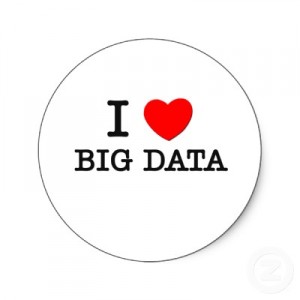Big Data Continues to Roar – Designers Take Note!
 Big data involves using super-sized data sets to create value in new ways. According to a recent report by the McKinsey Institute it is The Next Frontier for Innovation, Competition and Productivity.
Big data involves using super-sized data sets to create value in new ways. According to a recent report by the McKinsey Institute it is The Next Frontier for Innovation, Competition and Productivity.
“Data have swept into every industry and business function and are now an important factor of production, alongside labor and capital. We estimate that, by 2009, nearly all sectors in the US economy had at least an average of 200 terabytes of stored data (twice the size of US retailer Wal-Mart’s data warehouse in 1999) per company with more than 1,000 employees. “
How can a ton of data drive innovation, productivity and competitive advantage? According to the report it can be used to:
- Create transparency in operations, service, price and quality.
- Enable experiments to discover needs, root causes, variability and improve performance.
- Understand populations of customers and employees to offer customized offerings and interventions.
- Develop algorithms to support, improve or replace human decision-making.
- Create new business models, products and services by leveraging data about use to refine them, building information components into them and selling data.
In each of these strategies cognitive design plays an important role. Cognitive design focuses on the experiential component of big data applications to insure they authentically move hearts, extend minds or otherwise create value through positive psychological impact.
The report highlights that one of the major challenges of big data is having enough managerial and technical talent to do the work. They predict a shortage of some 1.5M big data savvy workers by 2018. Fortunately, leading universities such as Northwestern are offering new programs in Predictive Analytics and Analytics to help meet the demand for big data professionals.